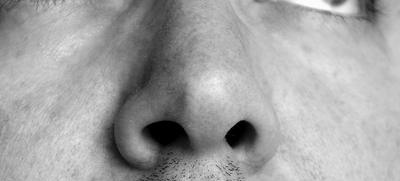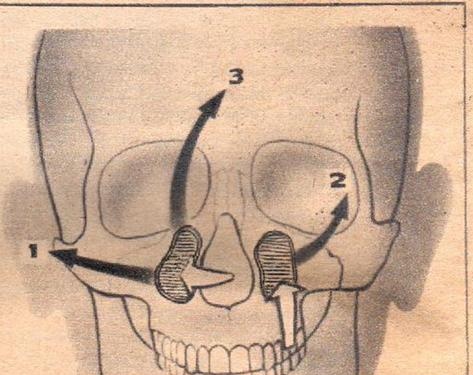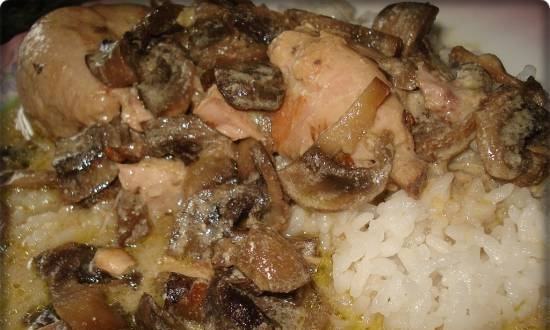|
 On each side, the paranasal sinuses are adjacent to the nasal cavity. The maxillary, or maxillary, sinuses are named after the English physician and anatomist N. Haymore, who first described them in the 15th century. On each side, the paranasal sinuses are adjacent to the nasal cavity. The maxillary, or maxillary, sinuses are named after the English physician and anatomist N. Haymore, who first described them in the 15th century.
These sinuses, like all the others, are filled with air and are connected to the nasal cavity by a duct. Air passes through it, and pathogenic microbes can enter the sinus in the same way. And then there is an acute inflammation of the maxillary sinus - sinusitis. Most often, this disease develops as a complication of acute rhinitis (runny nose).
The infection can be brought into the maxillary sinus and with the blood stream if a person is sick, for example, with influenza, measles, scarlet fever. Often the cause of sinusitis is bad teeth, especially the upper jaw, since their roots are close to the very bottom of the sinus.
Although the causes of acute inflammation of the maxillary sinus are different, it is quite typical, with characteristic symptoms. A person feels pain in the cheeks, upper jaw teeth, sometimes in the forehead or the entire half of the face. The pain increases with coughing, sneezing, tilting the head, after drinking alcohol, which is explained by a rush of blood.
The mucous membrane of the maxillary sinus gradually swells, air is forced out of it, in addition to pain, tension is felt in the cheek. The runny nose intensifies, and the discharge from the nose becomes not mucous, but purulent. Worries and headache... Breathing becomes difficult, the sense of smell and taste are reduced. Photophobia and lacrimation often develop, which is associated with narrowing or blockage of the nasolacrimal canal. The disease can be accompanied by an increase in temperature, but often occurs at normal temperatures.
In all cases of prolonged rhinitis (especially unilateral!) And with the indicated symptoms, it is imperative to consult an otolaryngologist. Sometimes the doctor prescribes a puncture of the maxillary sinus. Such a puncture is not only a diagnostic, but also a therapeutic procedure, since it allows you to inject medicinal substances directly into the inflammation focus, as well as remove pus accumulated in the sinus. The punctures are repeated, as a rule, every other day until then. until the wash water is completely clean.

The shaded areas are the right and left maxillary sinuses. White arrows indicate possible routes of infection (from the nose and 5-6 upper teeth). Dark arrows show where complications occur more often: in the middle ear, brain, orbital soft tissues.
You should not be afraid of this procedure and refuse it. The puncture is done after preliminary anesthesia of the nasal mucosa, so it is completely painless.
To reduce swelling of the nasal mucosa and improve the outflow of fluid from the sinus, vasoconstrictor nasal drops are prescribed. Physiotherapeutic procedures are also used - blue light, sollux, UHF, microwave therapy, as well as antiallergic drugs.
A timely visit to a doctor and the fulfillment of all his prescriptions accelerates recovery. But you need to be patient, as the disease sometimes goes on for a long time, sometimes recurs. And if you interrupt the treatment of the acute process or do not complete the fight against relapses, chronic sinusitis may develop.
In people with chronic sinusitis, the pain is usually less intense, diffuse, but runny nose does not stop, sometimes with purulent discharge, which has an unpleasant odor; there is often a headache. Many patients complain of a weakening of memory, rapid fatigue during mental work. On the affected side, the sense of smell is weakened or completely absent.
The main method of treatment is a puncture to wash the sinus with medicinal substances and administer antibiotics or other antimicrobial drugs.If such conservative treatment does not give an effect, the patient is hospitalized, since in some cases, especially with sinusitis of dental origin, an operation is necessary. Carious teeth that are the cause of the disease are removed first.
The main thing in the prevention of sinusitis and its exacerbations is to completely get rid of the common cold, promptly remove nasopharyngeal polyps, adenoids... And, of course, general hardening is necessary, which is usually recommended to start in the warm season. It is known to increase the body's resistance.
M. E. Zagoryanskaya
Read now
All recipes
|
 On each side, the paranasal sinuses are adjacent to the nasal cavity. The maxillary, or maxillary, sinuses are named after the English physician and anatomist N. Haymore, who first described them in the 15th century.
On each side, the paranasal sinuses are adjacent to the nasal cavity. The maxillary, or maxillary, sinuses are named after the English physician and anatomist N. Haymore, who first described them in the 15th century.






